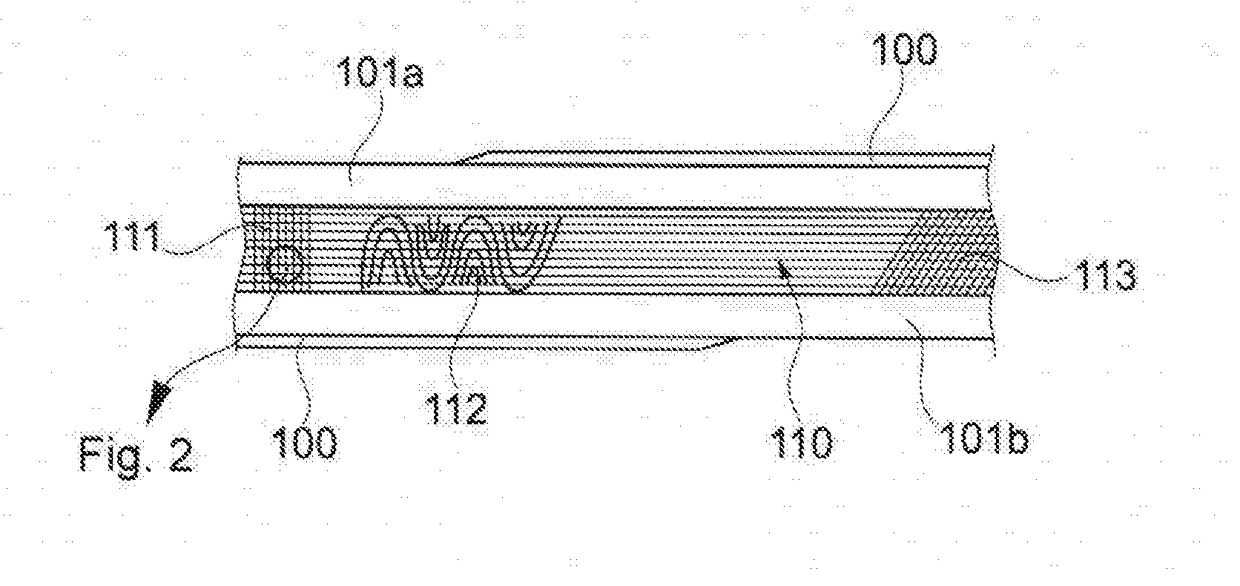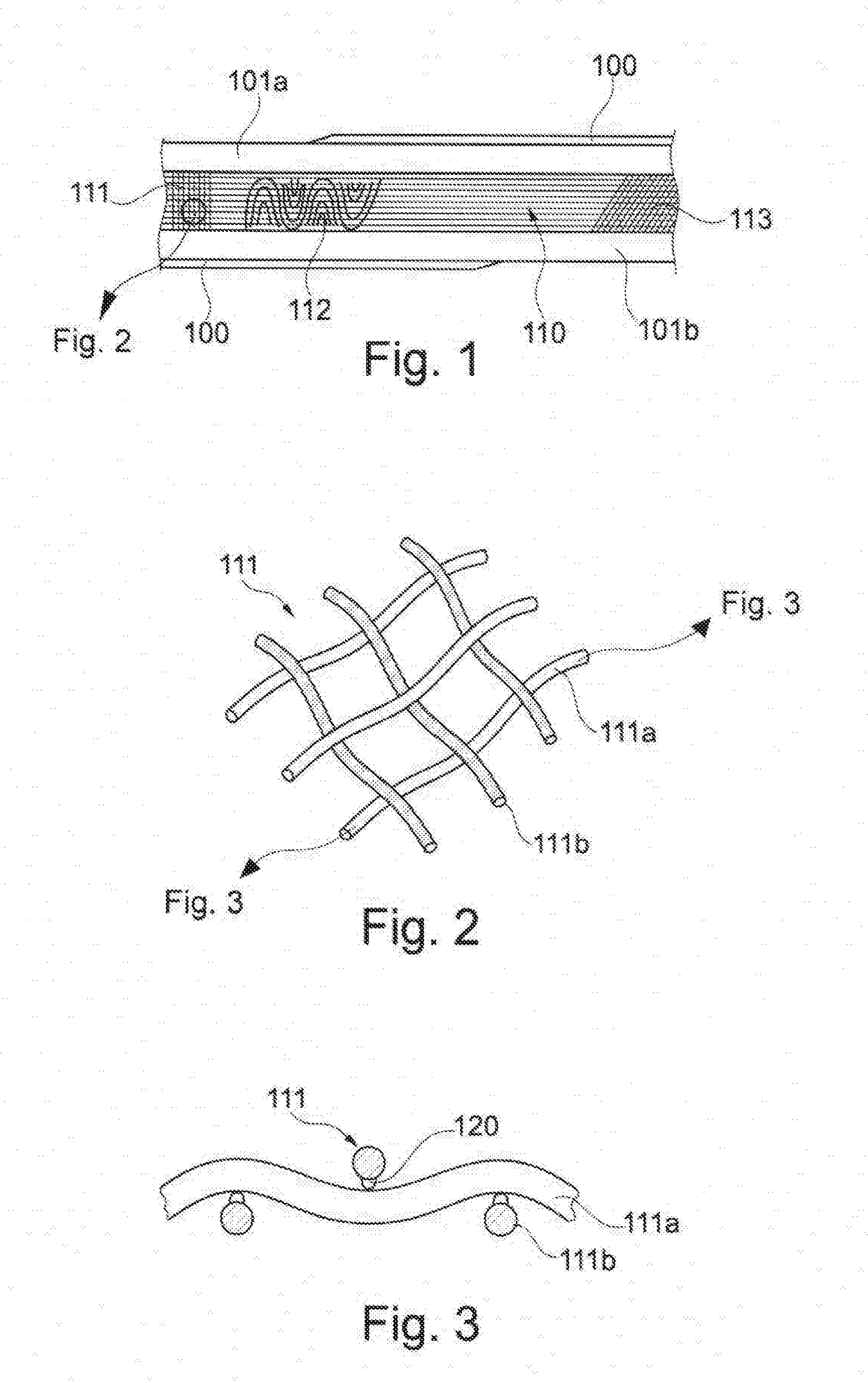Sandwich arrangement with ceramic panels and ceramic felts
- Summary
- Abstract
- Description
- Claims
- Application Information
AI Technical Summary
Benefits of technology
Problems solved by technology
Method used
Image
Examples
Embodiment Construction
[0093]FIG. 1 shows a partial longitudinal section through an embodiment of multi-plies CMC provided as a sandwich system. Fundamentally, the embodiment CMC material can be designed with individualized fibre structure in accordance with the operational requirements. A certain percentage of the fibres exhibits differentiated diameters, which are intended to mainly carry the mechanical load (in the case of the larger diameters) within the CMC section of the hot gas path parts during operation. The outermost panels 101a, 101b of the sandwich system (100, 101a, b, 110, . . . ) consist of one or more plies, wherein at least one of the panel 101 possesses an integral or quasi-integral smooth protective coating 100 having a strong contact with the adjacent ceramic structure of the panel. In many applications, but not exclusively, it is preferably that the fibres of the first panel 101a have the same composition and / or material as the fibres of the second panel 101b, which is disposed on the...
PUM
| Property | Measurement | Unit |
|---|---|---|
| Flow rate | aaaaa | aaaaa |
| Permeability | aaaaa | aaaaa |
Abstract
Description
Claims
Application Information
 Login to View More
Login to View More - R&D
- Intellectual Property
- Life Sciences
- Materials
- Tech Scout
- Unparalleled Data Quality
- Higher Quality Content
- 60% Fewer Hallucinations
Browse by: Latest US Patents, China's latest patents, Technical Efficacy Thesaurus, Application Domain, Technology Topic, Popular Technical Reports.
© 2025 PatSnap. All rights reserved.Legal|Privacy policy|Modern Slavery Act Transparency Statement|Sitemap|About US| Contact US: help@patsnap.com



